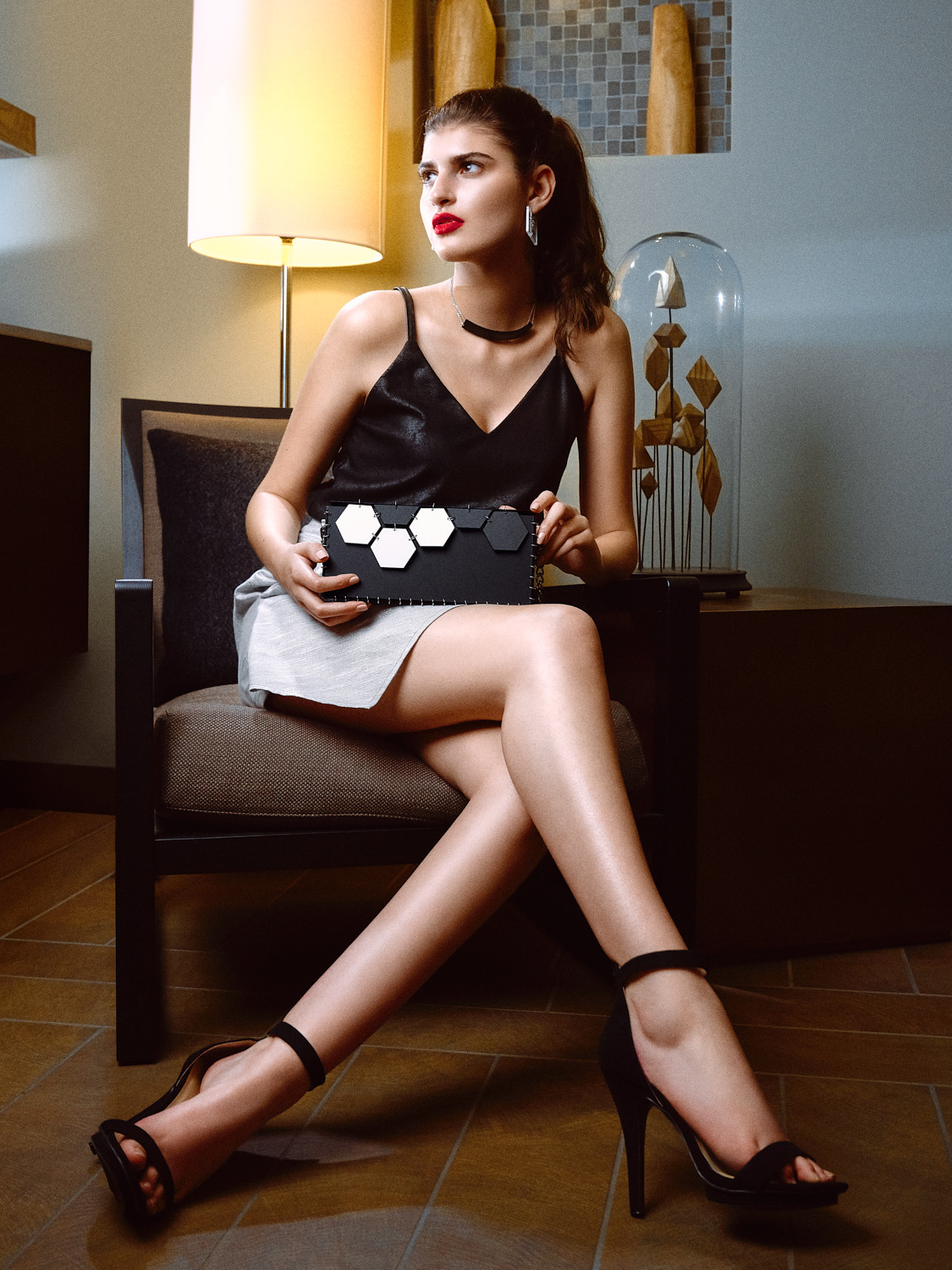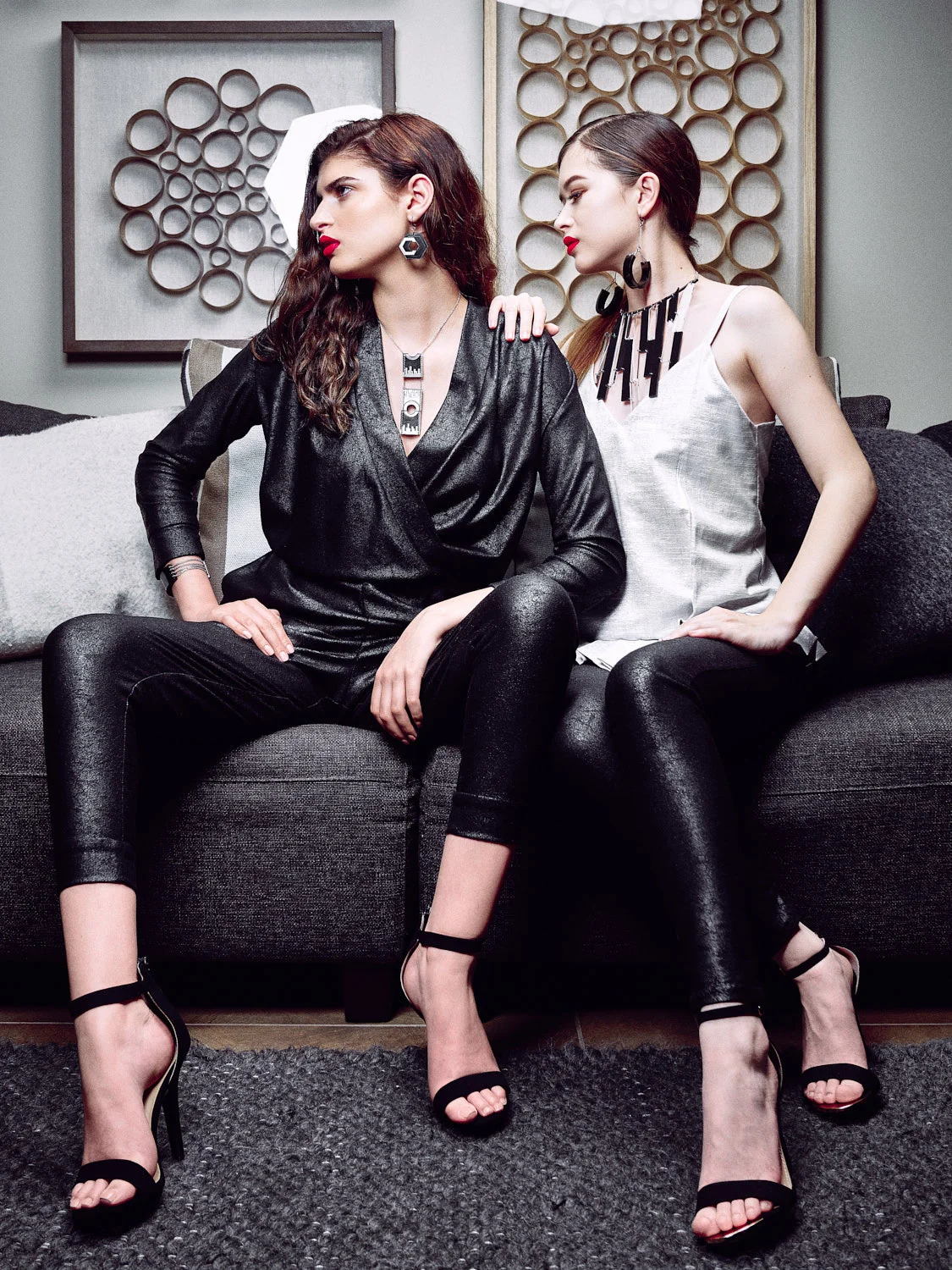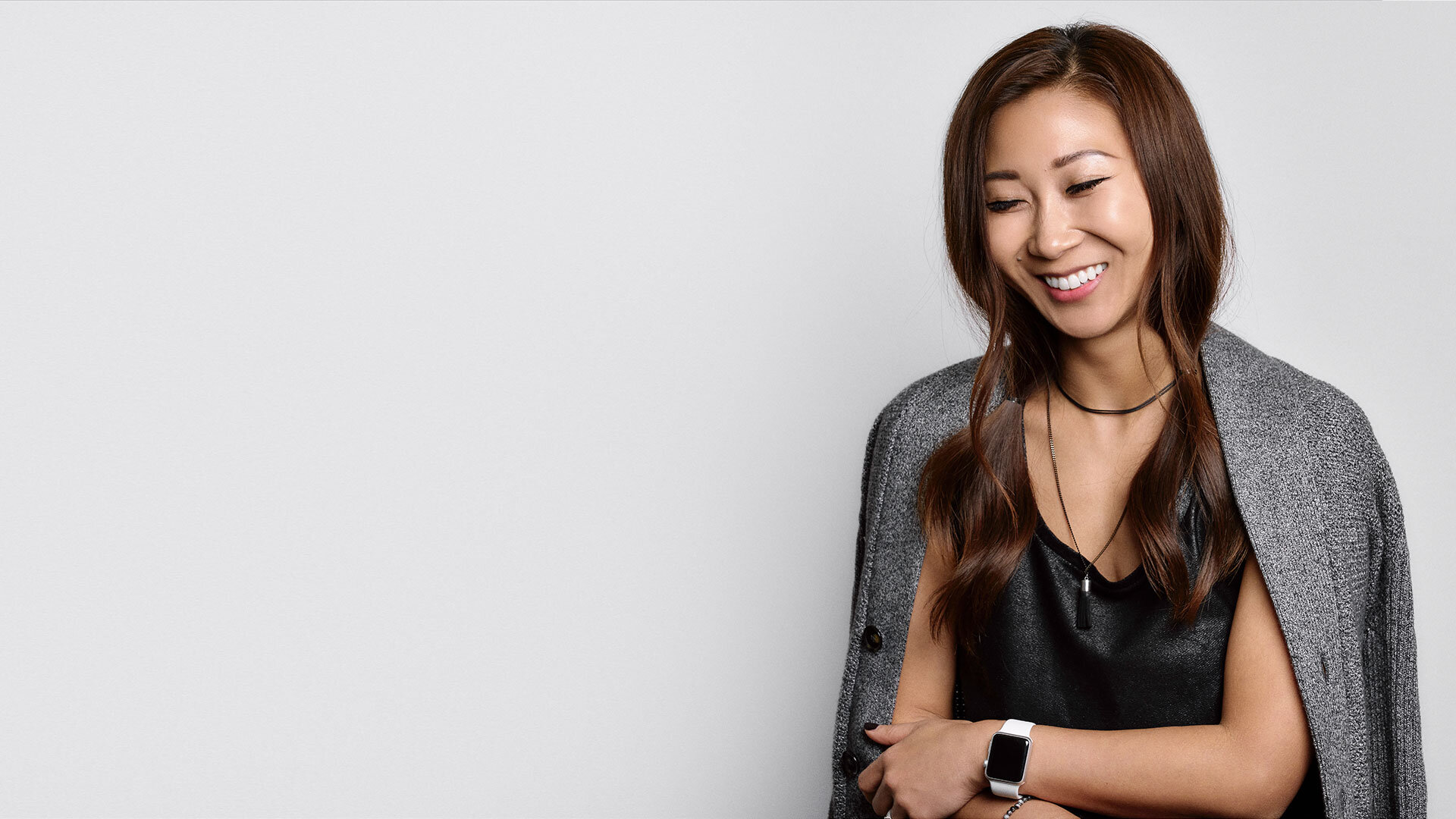
Kelly Su is the Founder and Creative Director of women’s ready-to-wear fashion labels Cami&Tank and Composure By Kelly. Both labels focus on women’s essentials, with the former exclusively offering tops, and the latter, separates, to form a cohesive solution for women of every age and lifestyle.
Her current collections focus on transitional wear intended to be worn with layers and styled with an existing wardrobe—a decision that lends itself well to Seattle’s four seasons and unexpected weather conditions. And her interpretations of the camisole are both delicate and subtly aggressive, like a second skin meant to be caressed and then defend against the elements. Perhaps as apt a description as any for a garment known as a modern lingerie-turned-outerwear staple.
Kelly Su
Born : South KoreA
Raised : Alaska
Education : Art Institute of Seattle
Experience : Designer, Nordstrom Product Group
Labels : 2
Focus : prêt-à-porter
Studio : Yes
Location : Renton, Washington
/ ˈkaməˌsōl / | Noun
Modern. Daywear.
A sleeveless, loose-fit, waist-length shirt typically worn as an undergarment either with or without bra. Can be styled with button-up shirts and suit jackets or worn on their own as outerwear.
Camisoles historically referred to an underbodice or jacket, typically waist-length, of varying design and materials. They were worn underneath corsets and other attire to protect outerwear from detritus produced by the skin. They developed from the chemise, which was a unisex three-quarter length smock worn with a similar purpose beneath full-length dresses and overcoats.
Though trends came and went, the camisole remains a widely adopted t-shirt replacement. Fashion designers and consumers alike have fallen for their minimalistic design, satin textiles, lacy embellishments and the unmistakably feminine feeling the garment bestows upon its wearer.
With her latest label, Cami&Tank, Kelly’s ambitions have been to take the style, elegance and soothing satins that were once hidden from view and place them front and center on Seattle’s fashion stage. But she does so by imbuing a traditionally demure garment with a healthy dose of glam rock style. Camisoles are now part of the outerwear lexicon and are an affirmation of one’s identity as inherently powerful and feminine.
Cami&Tank and Composure By Kelly SS19 Selections
“GROWING UP IN AN ASIAN HOUSEHOLD, FASHION DESIGN OR ARTISTS—THAT JUST WASN’T A REAL CAREER.”
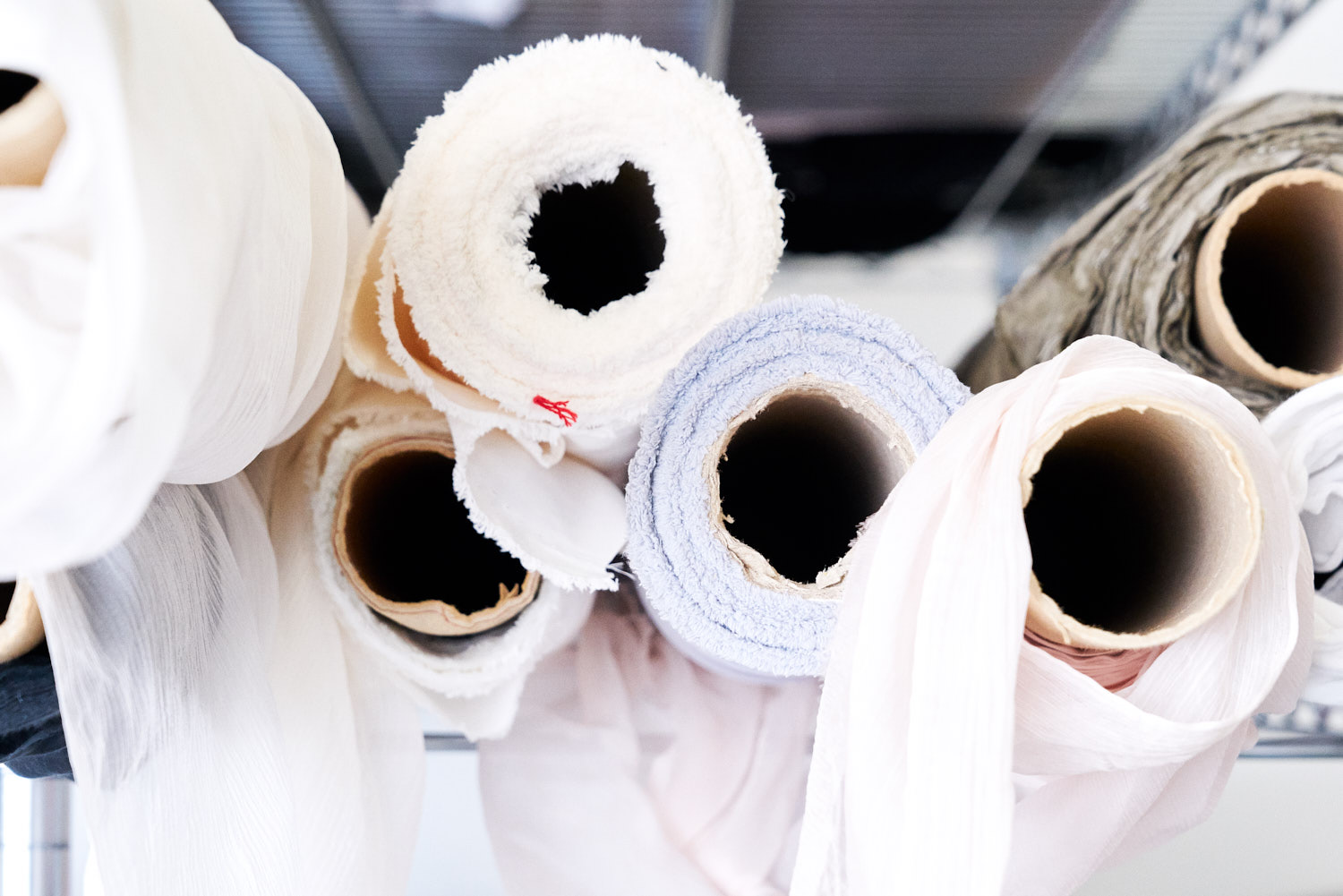
Great Frontier
Kelly was born in South Korea to a military family. She spent her formative years in Anchorage, Alaska. The only daughter amongst nine brothers, she vividly remembers trodding around in the mud and tundra whilst accompanying her family on hunting trips in the Alaskan wilderness. “My brothers from Alaska, they're big hunters. They would hunt grizzly bears. Yeah, it wasn't like little hunting. They would hunt bears.”
“I grew up as a big tomboy,” she reluctantly confesses while maintaining her love and admiration for her siblings. Her mother tried to create an image for her that was very feminine, choosing vibrant colors and expensive textiles. But Kelly’s color palette was always monochromatic, perhaps as much an intrinsic motivation as it was a reaction to extrinsic factors.
Yet despite the ruggedness and complexities of her masculine upbringing, Kelly’s interests in fashion became self-evident. She began sketching silhouettes, and from there, evolved into designing and fabricating wardrobe for her dolls out of anything she could find.
She recalls receiving a cashmere sweater as a gift from her mother, which she then cut to pieces and repurposed. And while she would not go into detail, the severity of her mother’s reaction is still clearly evident in Kelly’s hemmed in response.
Although fashion design was the subject of deep contention within her family, Kelly recalls her mother being an elegant woman whose tastes in fashion were rich and colorful and deeply feminine—characteristics Kelly would spend the remainder of her formative years rebelling against.
While her influences remained broad, it was the long Alaskan winter seasons and short daylight hours that served to inform her creative intuition, which can be most readily seen in the monochromatic and lightly textured fabric selections that comprise her current collections.
High School
Kelly began her fashion career at Nordstrom Anchorage. “I actually started woking as a fragrance model for Nordstrom when I was in High School,” she remembers, recalling her first exposure to Chanel as a source of inspiration.
It was there she secretly plotted her next steps toward a formal fashion education. Her plan was simple: She would have to leave her home in Anchorage on her own—something she had never done before—and move to large city with a thriving fashion scene.
And the first choice was obvious: New York. She dreamed of attending the renowned Parsons School of Design in Lower Manhattan where she would gain a world-class education and then a job working for Donna Karan before leaving to start her own international fashion brand. But New York has an intimidating reputation, and does not suffer naïvety lightly. And fortunately for her, there was another option.
“I asked my manager at the time…if I moved to Seattle—I know that there’s a flagship store there—can I get relocated?” She kindly agreed. And so it was at the age of 19 that Kelly left for Seattle to pursue her dream of becoming a fashion designer.
College
She landed at the Art Institute of Seattle where the crucible of education would test her resolve. Creative by nature, Kelly would confront both her great difficulty with, and finally, her incredible gratitude for the Institute’s emphasis on developing technical skills and mastery.
“The Art Institute [was] really good at teaching me that, the technical side, which I wasn’t even thinking about at the time.” It’s not enough to be creative, she asserts. “You have to have the vision to start from the beginning [and technically follow through] to the end.”
“You can’t just sketch something beautiful, create something beautiful and hope that it’ll just come to life.”
Runway
The first fashion show experience came her senior year at the Art Institute. With broad influences from Taoism and Zen Buddhism, her first collection might be described as a personal journey of self discovery. It was a time of diverse reflection in Seattle, as the post-grunge fashion scene gave way to a post-grunge alternative music scene. Capitol Hill still had a thriving arts community and Instagram was a decade away. Though flannel had never left—and likely never will—one thing remained. Seattle was becoming a melting pot where things seemed to melt together.
One of her more memorable pieces from that collection was a kimono made from polar fleece, where she found a balance between elegance and utilitarianism. But the collection was inconsistent. So her second would feature elements with a decidedly more feminine approach. And it was the finale at her second runway event that truly stole the show.
“I remember my finale, my last piece that I had out there…I needed a ‘wow’ piece because I knew I was going last.” Kelly tilts her head to one side as she recalls more in depth, raising and lowering her arms with increasing intensity and precision, as a conductor would leading a symphony. She recounts creating a mesh see-through dress with a fitted silhouette to which she affixed hundreds of flower petals with show stopping results.
“I remember someone did offer to buy that at the show, but I kept it…They gave us a CD of our fashion show and I’m, like, sharing it with everybody. That was exciting. That’s when I was like, yeah, I can call myself a designer.”
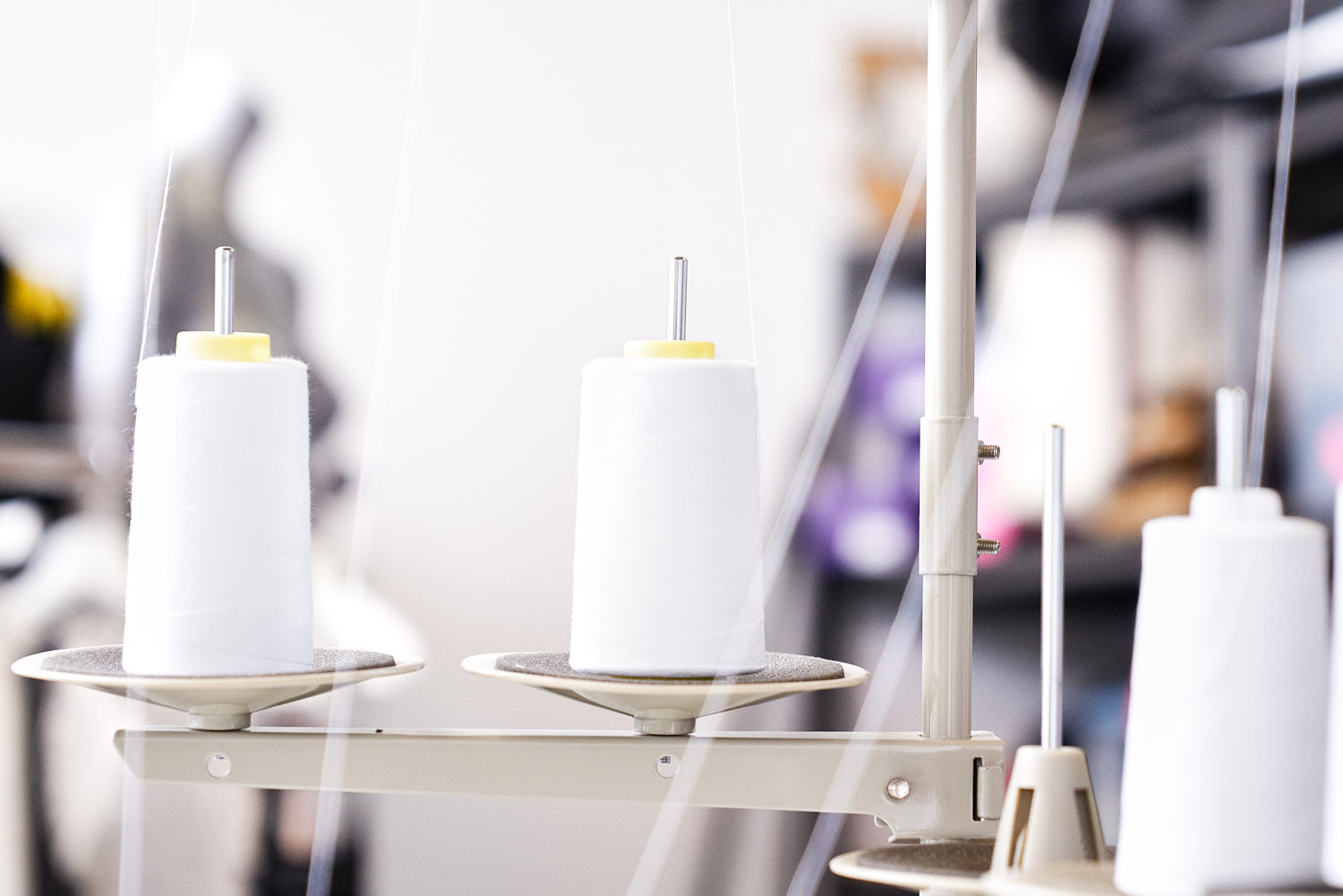
“When you think of lingerie you’re thinking of the very lacy risqué nightgowns, but it’s not true.”
Nordstrom Flagship
While attending the Art Institute of Seattle, Kelly worked in cosmetics at the Nordstrom Flagship location on 5th Avenue. It was there she first learned about Nordstrom’s private label design studio Nordstrom Product Group—an in-house design team in the offices above the retail space.
While visions of New York still permeated her purview, she began to imagine a new path forward toward this presently more achievable goal literally just above her current position. And as luck would have it, a chance encounter with a customer sitting in her Chanel makeup chair was exactly the catalyst she needed to alter the course of her life.
Nordstrom, Inc.
Established : 1901
Chairman : Philip Satre (2019)
Status : Public (NYSE)
Market Cap : $8.2B USD (2018)
Employees : 72,500
Stores : 380 (US + Canada)
Countries : 96 (via e-commerce)
Design Studio : Nordstrom Product Group
Design Team : In-House
Headquarters : Seattle, WA
“One day I had a customer [who] came in all the time. She always bought the same lipstick—Chanel Red 22. She asked me to give her a makeover. [I said] you know, I probably won’t see you for a while because I’m planning to leave, I’m graduating soon. She asked more questions like, ‘What are your plans?’ [I told her] I want to be a designer and maybe check out [Nordstrom Product Group]. She said, ‘Well after you graduate come on up. My name is Gail. Just let them know that you’re here to meet with me.’ After she left, my colleague came over and was like, ‘Do you know who that is?’ I said, No. She was like, ‘She’s the President of NPG.’ I was like, Really? It was pure luck I ended up working that day, got interviewed—I mean, it just happened so smoothly.”
Kelly’s customer was Gail Cottle, then President of Nordstrom Product Group, whose career with Nordstrom Inc. spanned from 1972 - 2002, and whose influence was felt throughout Nordstrom merchandising and employee culture. And after a successful interview, Kelly began as an Associate Designer with NPG in 2000. Her duties included assisting in the design process, gathering measurements, creating tech packs, corresponding with manufacturers, making necessary revisions and finally receiving the production samples in studio.
/ tek-pak / | Noun
A series of instructions pertaining to the creation of an item, including Flat Sketches, Measurements, Bill of Materials, and other relevant information. In commercial fashion, this is typically created by a design studio and sent to the manufacturing facility where the item will be produced.
Daywear : A Brief History
In Seattle during the early 1990s, lingerie came into trend as outerwear largely by way of the Slip Dress. The emergence paired poignantly with attitudes of celebrities like Courtney Love and Kurt Cobain who wore the garments at rock shows and red carpet events. It’s difficult to pinpoint the beginning, though in hindsight, it was certainly Seattle that inevitably contributed to what would infamously go down in fashion history as the era of Grunge.
The Seattle music scene was bursting with new ideas. Bands like Nirvana, Pearl Jam, Soundgarden, Alice In Chains, Hole, The Melvins, Mudhoney, Screaming Trees and several others turned a spotlight and a microscope on the city and its newly appointed celebrities. The very idea of lingerie formed a visual juxtaposition to the angst and unrest felt by a generation of young people struggling to make sense of a world that wrestled with the razing of the Berlin Wall and the broken promises of their forbearers.
The reactions from larger fashion houses were divided along typical lines. The established houses made every effort to move away from grunge and return to a more traditional interpretation of women’s beauty. Marc Jacobs’ dismissal from Perry Ellis sent shockwaves throughout the fashion community and signaled the desire of the commercial brands to return to past successes. The world would have to wait until 2018 for his collection’s second-coming.
But the trend was set. And fashion would do what it does best: Assimilate from culture and produce interpretations at the intersection of art and commerce.
Kate Moss famously wore a Liza Bruce translucent slip dress in 1993 to the worlds shock and excitement, and has worn them ever since. The slip dress later found its way in vogue with celebrities like Gwyneth Paltrow, Winona Ryder, Jennifer Aniston, and Carolyn Bessette. Even Princess Diana wore a Dior slip dress by John Galliano when she attended The Met Gala in 1996. From there, underwear-as-outerwear forever became a hallmark of 90s fashion.
Apart from the sensationalized marketing efforts from brands like Victoria’s Secret, and in keeping with the Diffusion of Innovations, the late 90s and early 2000s were the right time for lingerie to have more mass-market appeal.
Nordstrom Product Group
In the early 2000s, Nordstrom was looking for a Lingerie Designer who could bring a feeling of accessibility to daywear, and needed someone with a knitwear background to develop a modern interpretation including tank tops, boy shorts and camisoles.
Kelly’s first assignments for NPG were in knitwear for the Halogen label designing t-shirts, tank tops and sweaters. She saw her opportunity. Kelly applied for the position of Lingerie Designer for Nordstrom Signature label and was accepted. For the next 2 years, she dove headlong into a deeply feminine world rich with satin and lace textures that would serve to prepare her for her latest endeavors. The tomboy-turned-lengerie-designer was now in a position to bring a more balanced worldview and mass-market appeal to a classically diverse and often sexualized genre.
“When you think of lingerie, you’re thinking of the very lacy, risqué nightgowns, but it’s not true. When you say lingerie, even now, [when] you walk into Victoria’s Secret and you look at their lingerie, it’s a lot of sleepwear . . . A lot of the time they’re like little cute tank tops and little boy shorts . . . that you would just wear out. So that’s why they call it daywear, because you can wear these out.”
In total, Kelly remained at Nordstrom Product Group for six years from 2000 - 2006. While her dream was always to own her own independent fashion studio, her positive experiences made the parting difficult. “If I stay, I might never leave,” she remembers. But with her husband’s support, she took the leap of faith and started her very first fashion label, Composure By Kelly.
Composure By Kelly FW18 Selections
“My ultimate goal was always to have my own business, to do my own thing.”
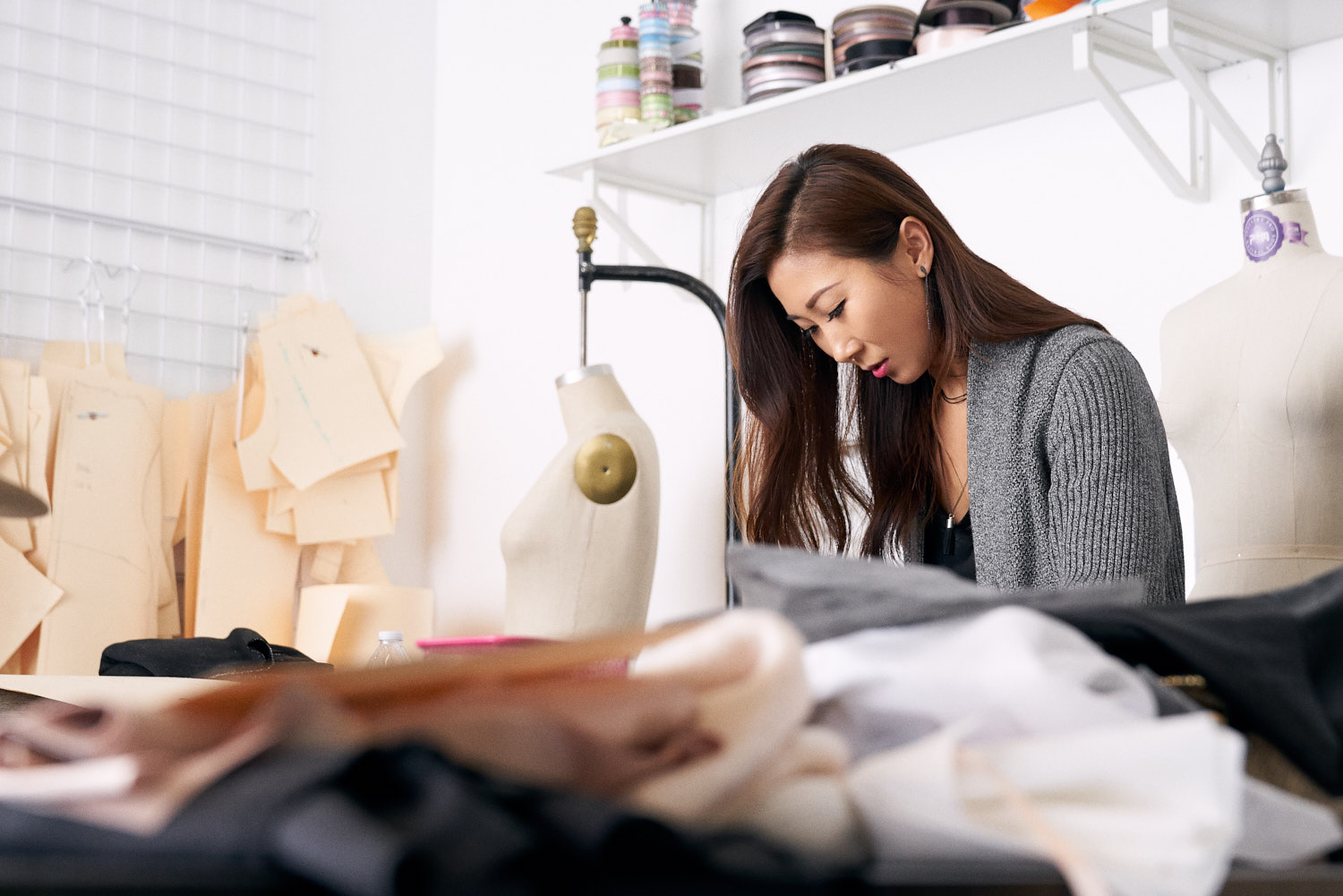
“I really didn’t have an exit strategy. It was just kinda like, I’m gonna do it, I’m gonna run with it and see how far it takes me.”
Drawing on her earlier inspirations—in particular Gabrielle “Coco” Chanel’s deep blacks, clean lines, beautiful textures and elegant minimalism—Kelly applied a similar approach to women’s separates. While the business struggled through a typical startup cycle, her brand began to slowly take shape. However, she saw new opportunity in the women’s golf market and ultimately put Composure By Kelly on hold.
Timeline :
Art Institute of Seattle : (2000 - 2003)
Nordstrom, Inc. : (2000 - 2006)
Composure By Kelly : (2006)
She Golf : (2006 - 2010)
Babymoon : (2010 - Present)
Composure By Kelly (2015 - Present)
Cami&Tank : (2017 - Present)
She Golf
It was the early 2000s. Tiger Woods catapulted golf into a new position of popularity. The LPGA vanguard saw consistent wins from Annika Sörenstam, Cristie Kerr, Lorena Ochoa and Karrie Webb. Celebrities Tea Leoni, Catherine Zeta-Jones and many others further modeled the sport’s accessibility to women.
Kelly’s husband, an avid golfer, would often invite her to participate. Unenthusiastic at the prospect, she agreed, but quickly found the wardrobe options available to her unsatisfactory. So Kelly made a decision that would prove to be the catalyst for her second fashion label. And in the process, began a theme that would run throughout her entire career.
She would solve her own problem first, validate the concept, and then turn it into a business. And after validating the concept with close friends, Kelly formed her concept into her second brand, She Golf, and quickly saw her sportswear line at Pebble Beach and trade shows across the country.
“Starting out we made a lot of mistakes. It was kind of like me alone walking down this path.”
But the news wasn’t always good. Kelly admits some of the difficulties she experienced during those years were crushing: “For She Golf, I invested a lot of my own personal funds into the business. For production, rather than doing it in a smaller amount, we just decided, let’s go big, and just kinda went all in . . . A year’s worth of production was not the smartest idea.”
The quantity was too great and the demand too low. The Seattle market saw favorable golfing weather four months out of the calendar year. And as quickly as the fashion industry arose to support the trend, the sport fell out of favor with consumers, leaving Kelly with surplus inventory and time for introspection.
“Starting out [we] made a lot of mistakes . . . Choosing the right factory partners, people that you trust working with. I mean you really do work with others. You have contracts in and out . . . suppliers, factories. Just [make] sure you do your research on their companies and who you’re working with. Stay neutral and [don’t] let your emotions get too high [or] too low . . . Not knowing where are my resources, who can I connect with, who can I talk to about this. It was kind of like me alone walking down this path.”
It would be an expensive education in trend cycles and business relationships, but one that proved more valuable than her time in college. It was the right time for Kelly to close this chapter in her life. And in 2010, she exited the sportswear market altogether.
“To help yourself is to definitely network and that’s something that I feel like I lacked.”











